The Budget of Racing an IRONMAN
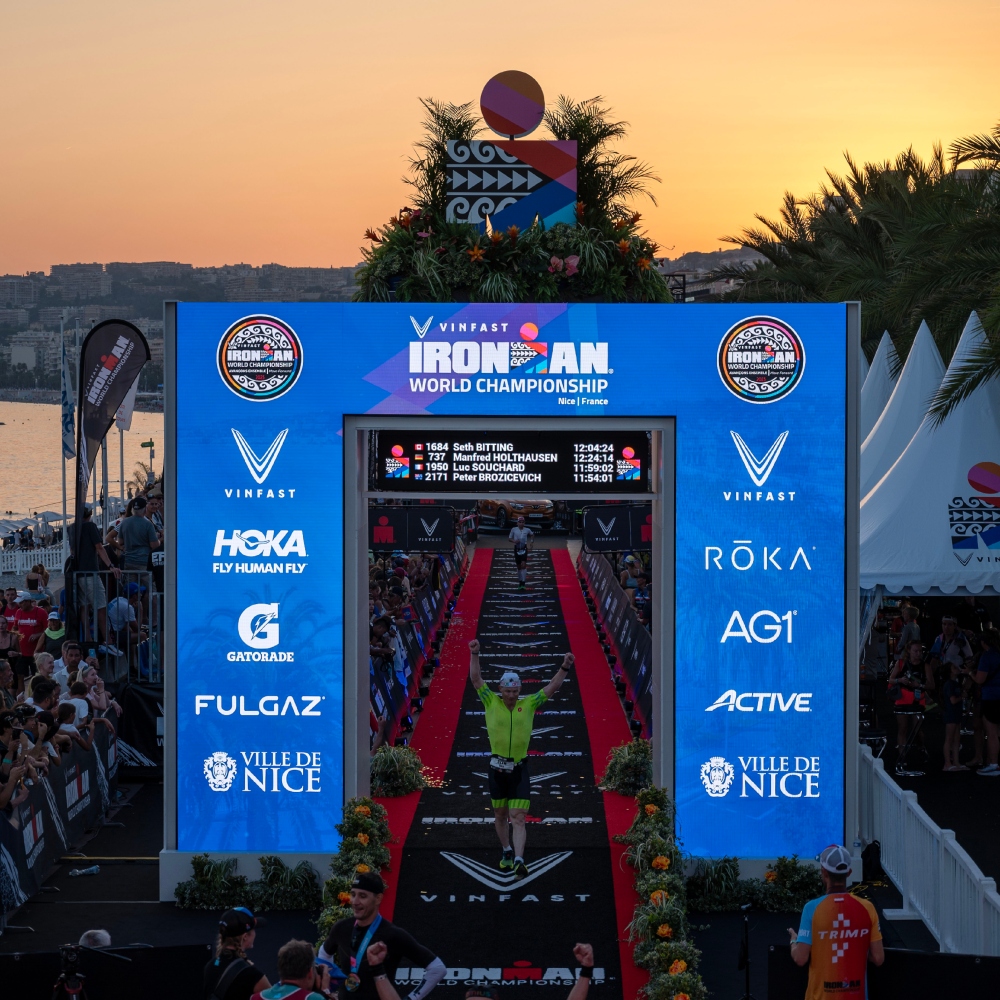
Photo: IRONMAN
Triathlon is an expensive sport. The list of things you need can seem pretty endless, and the costs can add up quickly. Of course, there will always be a baseline cost with any endeavour, and you can make it more expensive from there. We decided to take a look at the cost of racing an IRONMAN. We’re not just talking registration fees and race weekend accommodation — we mean everything. From gear to coaching and beyond, here is what it costs to tackle your first full-distance race.
Swim Basics
When it comes to swimming, you don’t need that much. You can certainly purchase a lot (we’ll get into the non-essentials for swimming in the next section), but at a minimum, you only need three things in order to prepare for, and execute, a swim on race day: a pool membership, goggles and a swim suit.
Pool Membership ($360 to $1,200 per year): Depending on where you choose to swim, a pool membership could be as low as $30 a month (such as at a local public recreation center). However, there are private pools with much more amenities (saunas, hot tubs, etc.) that will have heftier membership fees, potentially as high as $100 per month.
Goggles ($10 to $300): Goggles can be a tricky piece of equipment. You would assume that the more expensive the goggles, the better they’ll fit, but that’s not always the case. A pair of goggles could have the best reviews of all time, but it doesn’t mean they’ll fit your face. You could find that a $10 pair of goggles fits you perfectly and never leaks. At the same time, you could go all in on this equipment and get high-tech smart goggles that will show you your pace, distance and other metrics while swimming. These will be upwards of $300.
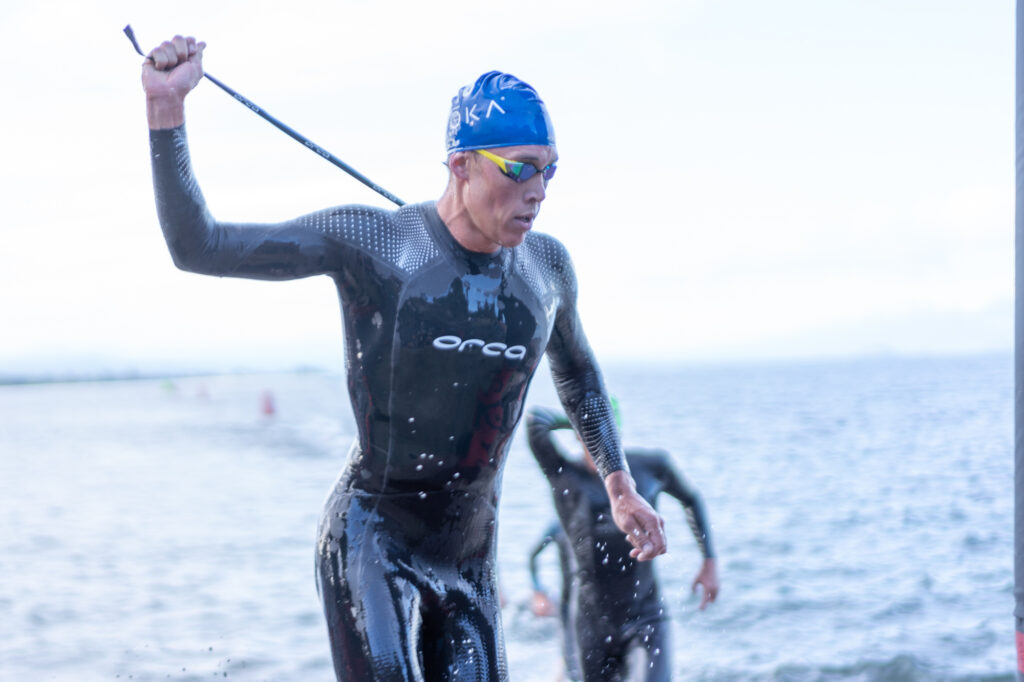
Swim Suit ($10 to $100): You can swim in pretty much anything you like, both in the pool and on race day, but a beach swim suit might not be the most comfortable option for swimming laps and longer distances. Luckily, you’re not going to have to spend all that much on a training suit (which you could also wear on race day if you so desired.
Swim Extras
Now it’s time to look at the additional purchases. You don’t need to get these, but they will certainly help you improve as a swimmer.
Swim Lessons/Swim Team ($20 to $50 per month): If you’re brand new to swimming and can’t even float, you’re going to want to get lessons. These are pretty easy to access, and they can be as cheap as $20 per month (normally running for around eight weeks at a time). After that, or if you already knew how to swim and just want to improve your form and get faster, you might want to join a masters team. This is likely around $50 a month, and it will give you weekly coaching and a group to train with and keep you accountable.
Kick Board ($8 to $30): This is absolutely not necessary to purchase, as almost every pool you swim at should have kick boards available to use, but some people like to have their own. You can find the most basic kick boards online for as low as $8, or you can get the fanciest options on the market for around $30.
Pull Buoy ($10 to $25): Same deal here as with the kick board — most pools will have pull buoys you can use for free. If you want your own, you can get them for as cheap as $10, or you can splurge on the $25 options.
Paddles ($12 to $35): Paddles are a great tool to help you improve your stroke, and they’re definitely worth the investment. Thankfully, they are not too expensive.
Fins ($12 to $35): Another great tool that will help to improve your stroke and body position in the water, fins can be a good purchase. Once again, they’re not too pricey in the grand scheme of triathlon gear.
Wetsuit ($150 to $1,500): Depending on where you’re going to race, a wetsuit might be a must-have piece of gear. However, if you don’t want to buy one, you can get away with it, but you’ll have to make sure that whatever race you choose for your schedule isn’t at risk of being called wetsuit-mandatory the morning of the event.
Bike Basics
Next up is the bike, which requires a lot more gear before you can ride or race.
Bike ($900 to $15,000): You could technically ride any bike in an IRONMAN, but we are going to operate under the assumption that you plan to race on a road bike at the very least. This can run you as little as $900. It won’t be the fastest, lightest or most aerodynamic bike in transition on race day, but it will do the job. On the other end of the spectrum, you can drop $15,000 on a bike if you so choose. Would we recommend making such an extravagant purchase before you’ve ever raced a single triathlon? Probably not, but if you have the money and that bike is calling your name, all the power to you.
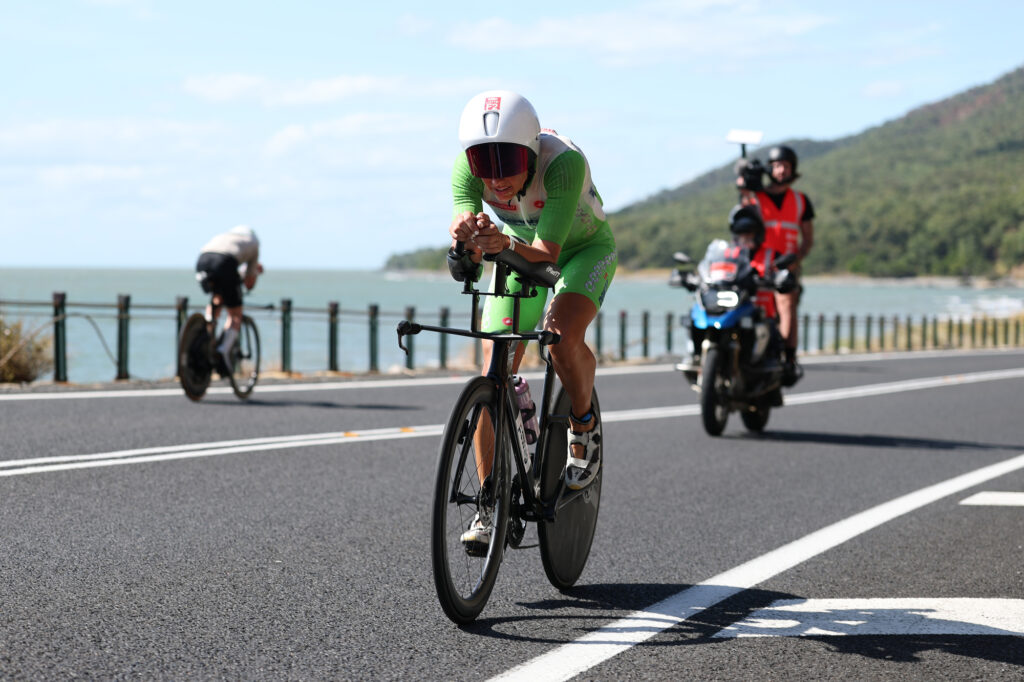
Photo: Cameron Spencer/Getty Images for IRONMAN
Wheels (Free to $4,500): You can save a lot of money on wheels by simply using the set that comes with your bike. If you want to go for something faster and more aero, you can drop as much as $4,500 on a set of wheels.
Tires (Free to $300): Once again, you can stick with the tires that come with the bike when you buy it. You’ll of course have to change these at some point, but when you’re starting out you’ll be ready to go. On the other end of things, you can spend $150 per tire if you want to.
Pedals (Free to $750): For the third item in a row, this is something you don’t have to buy if you don’t want to, as your bike might come with pedals. They might not clip in, they might be heavy, but they’ll let you do the job. Like many pieces of gear in triathlon, pedals can get pricey quickly, and you can spend upwards of $750 on a pair if you look for them.
Cycling Shoes (Free to $600): Depending on your pedal selection, you can really ride with any footwear, so the baseline price is technically free. Realistically, though, you want at least an entry-level cycling shoe. If you don’t want to spend too much, you can get a pair for around $70 to $90, and if price isn’t a factor, you can go as high as $600.
Helmet ($50 to $650): A helmet is one of the only things on this extensive list that you should not cheap out on. A good helmet can protect you from serious injury, and you can’t put a price on safety. Thankfully, there are solid, reliable helmets on the market that won’t break the bank, coming in around $50. Of course, you can get fancy, aerodynamic helmets that weigh next to nothing and offer tremendous airflow and so on, which can run you quite a pretty penny.
Bottle ($2 to $100): Yes, believe it or not, you can find a water bottle for $100. It will keep your water ice cold and it is ultra-light, but a $2 bottle of Powerade can be re-used if you’re looking to save on costs.
Bottle Cage ($15 to $220): Want a $220 cage to hold your $100 bottle? Well, you’re in luck, because there is a lightweight titanium bottle cage from Italy that is listed at that price. It looks cool, but the $15 one from Amazon works pretty well, too.
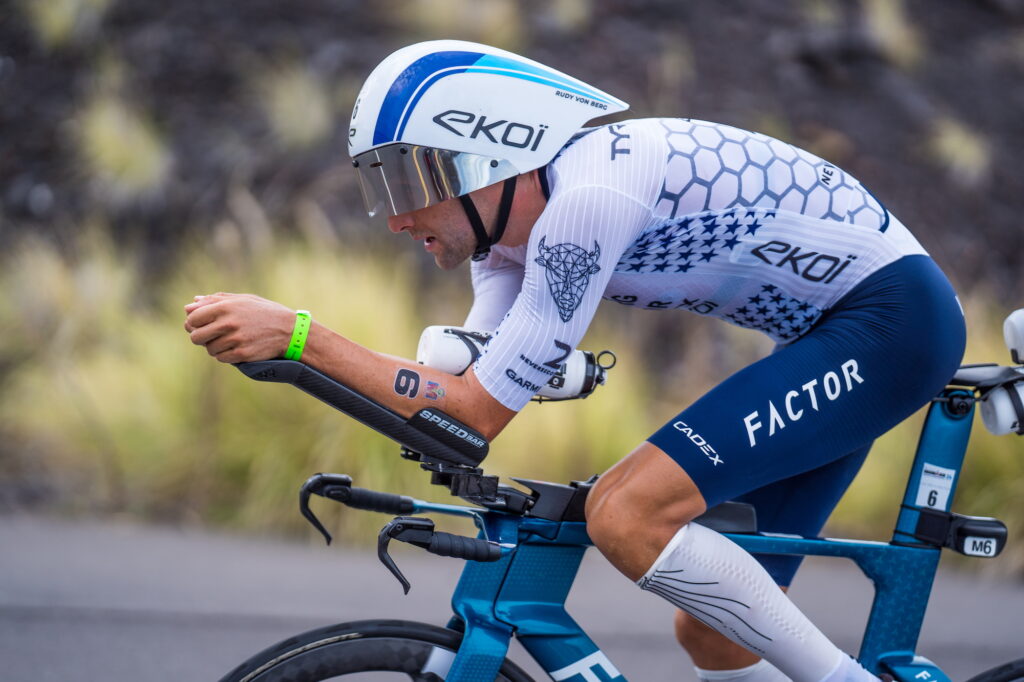
Pump ($15 to $500): You’re definitely going to need a pump to make sure your tires are full and at the right pressure every ride. It’s up to you if you want to spend $15, $500 or somewhere in between.
Shorts ($20 to $380): You absolutely need proper bike shorts for training. It’s not the spandex that’s necessary, but rather the padding that comes with the shorts. Your butt will start to ache pretty quickly if you don’t wear the right shorts, even on quick rides, so these are worth the money.
Jersey ($15 to $300): You’ll want a bike jersey for your rides so you can store your phone, nutrition and anything else in the back pockets, but that doesn’t mean you have to splurge on anything crazy. The base model jerseys go for as little as $15, but you can of course pay hundreds for a single one if you’d like.
Bike Extras
Bike Computer ($30 to $750): You can get an extremely basic monitor for your rides that will track your distance, speed and time. This is really all you need when out for a ride, but you can of course get much more data from a more sophisticated computer.
Run Basics
Shoes ($80 to $275): In the Bike Basics section, we said that a helmet was one of the only items on this list that shouldn’t be skimped on. Well, running shoes are the same.
Shorts ($5 to $220): Just like so many other things on this list, you can pay next to nothing for running shorts, or you can forget the price tag and get some shorts for a couple hundred bucks.
Run Extras
Watch ($15 to $2,100): Much like the bike computer, you can get a very basic, very cheap watch to use while running. It will only be a stopwatch, no distance or speed monitoring, but it will give you the information you need if you plan to do interval or track workouts. If you’re looking for something with a little more data, you can spend hundreds and even thousands on GPS and smartwatches that are decked out specifically for runners.
Sunglasses ($5 to $300): Much like the watch, you can find extremely cheap sunglasses that will protect your eyes and might not look half-bad. The more you spend, the better eye protection offered, and the better they’ll look.
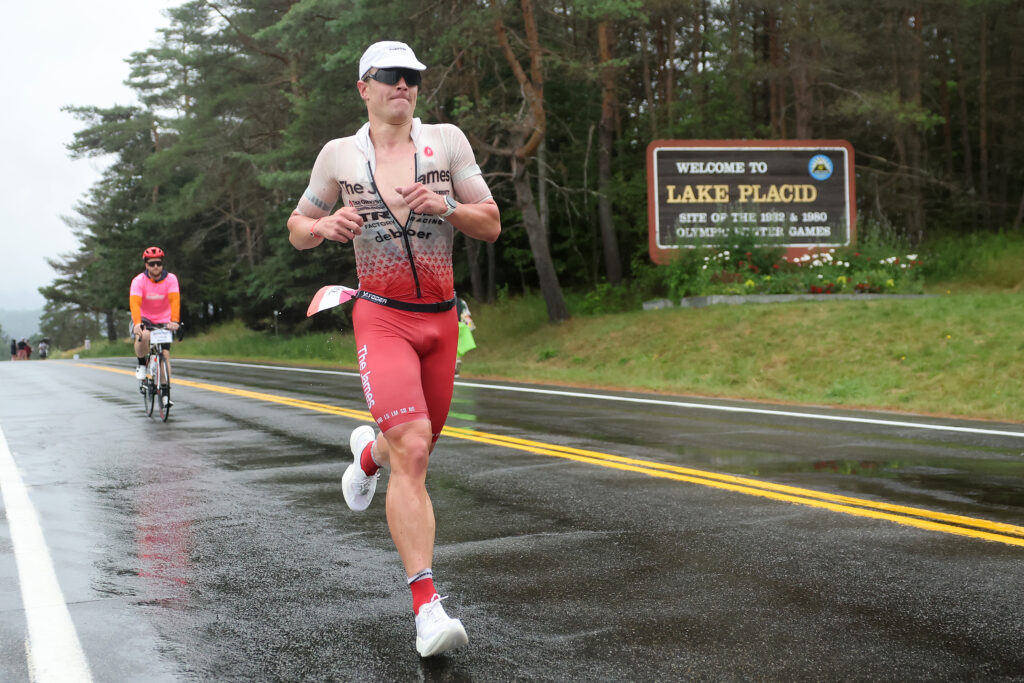
Photo: Hector Vivas/Getty Images for IRONMAN
The Race
Racing License ($15 to $50): If this is going to be your very first race, you might not know that you’ll have to pay for a race license. Depending on where you live, there will be different fees, but you can usually opt for a single-day license (for around $15) or an annual license (for about $50).
Race Fee ($930 to $1,000): IRONMAN race fees can vary from location to location, but you’ll be looking at a price point between $900 and $1,000. (Qualify for the worlds and you can add $500 to that top price.)
Travel ($200 to $1,200): Travel costs will of course vary drastically depending on where you choose to race, but unless you live in the town or city where the event is being held, you’ll have to pay for some sort of travel.
Accommodations ($160 to $1,200): If you’re travelling somewhere to do an IRONMAN, you’ll likely plan to stay for more than just a couple of nights, but let’s imagine that’s not the case and you’re showing up two days before, sleeping, racing and leaving the day after. Prices will be different in every location (smaller host cities or towns will have fewer options available, meaning those hotels can bump their prices on race weekend), but you could get lucky and find budget accommodation for under $100 a night. If you’re hoping for something a little more lush and luxurious, it’s never too hard to find a hotel eager to charge hundreds more.
Nutrition ($50 to $100): This is a tricky one to forecast in terms of cost, as it really depends on your individual needs and preferences. You’re going to definitely need to bring nutrition on the ride and run, but it’s up to you if you want that in gel form, bars, hydration mixes or anything else. Overall costs will definitely come on a person-to-person basis.
Race Suit ($30 to $800): Believe it or not, you can get a triathlon race suit for $30. On the other end of the spectrum, you can get the best-fitting, most breathable, custom suit imaginable, but it will run you close to $1,000.
Add-Ons
Coaching ($0 to $14,000 per year): You certainly can make your own training plan for an IRONMAN, but there is a lot to cover, and if you don’t have a background in endurance training, you will struggle to set up an effective schedule or get the most out of yourself on race day. You could also follow a pre-set plan for the entirety of your training, but without a coach, you won’t know how to adjust things if you hit speed bumps along the way to the race. Joining a triathlon club is a great way to save on coaching costs while still benefiting from advice and fluid training plans (this could be anywhere from $50 to $150 per month). Finally, you can get one-on-one coaching, and this can range from as low as $150 or $200 per month up to more than $1,000.
Tune-Up Race(s) ($75 to $300): You might want to do a tune-up race or two before your main event. Depending on the race you choose, this could be as cheap as $75, or you could be looking at $150 or $300 if you opt to do a couple of races before your IRONMAN.
Gym Membership ($0 to $4,000 per year): Strength training is a big part of IRONMAN training. You could do this for free at home, or you could go to a cheaper (but still good) gym for only $20 a month. As always, there are pricier options available with more perks, and if you decide to go to a really fancy spot, you could be looking at thousands of dollars per year to work out.
The Final Tally
No matter how you approach it, racing an IRONMAN is going to cost you a lot of money. But, like anything in life, after the baseline, you can make it as costly as you choose. Tallying up each of these sections, the lowest total you’re looking at to train for and race an IRONMAN is around $3,420. On the higher end of things, you could spend as much as $52,500 to do an IRONMAN. This is of course an absurd number, and the odds are low that anyone would choose to go all in on every category mentioned above. However, there is the range: $3,420 up to $52,500. You can choose where you fall within it.




Nice.
Maybe amortize those fixed equipment costs across 3 years? Or just show us the numbers for how much you “Save” by racing an Ironman next year too
Interesting exercise. Well done. While I could venture some ranges are debatable (travel and accommodations), they certainly are reasonable and I think this is really well thought out.
New year, new gear.
Actually, what we’re missing is training nutrition. Total up the number of training weeks, additional calories burned, and give us a cost based on calories expended in training.
Also missing from the cost are:
-Bribes/makeups to your family for the disruption to their life for >6 months
-Massage
-Physio (linked to the above)
For context for my first in 2005 which was a trip from UK to IM Austria I think I had a budget of $6k which included a new bike and wheels.
In reality I probably spent $8k, but raced on my ukp600 Giant TCR aero and shimano r540 wheels that combined cost less than any other single wheel I saw in transition. But I spent it on coaching, good food for breakfast, lunch and dinner, some minor physio stuff (I was 30, life was easier ) and an engagement ring (proposed in a restaurant overlooking the lake the night prior to the race, no wanky finish line theatrics for me).
) and an engagement ring (proposed in a restaurant overlooking the lake the night prior to the race, no wanky finish line theatrics for me).
Do I suggest this is the right way? It was for me. And the coaching/nutrition focus over the bike I think is something that is systematically missed by the vast majority of MOP athletes. I won’t say they get it wrong, because this is all about enjoyment of a hobby. But I do think that the value of coaching in improving both performance and enjoyment vs the cost to get improvement from spendng on kit is underestimated.
I started calculating that a while back and then got so scared myslef by the numbers I stopped and blanked it out.
Following on from another thread, recently, now I’m a bit older, I find that the nutrition is way more critical than it was even 5 years ago. Due to some other stuff, my stomach isn’t the best. And so those things combined mean that even a 10k lunchtime run now cost me 2x maurten gels and then a recovery shake (from powder).